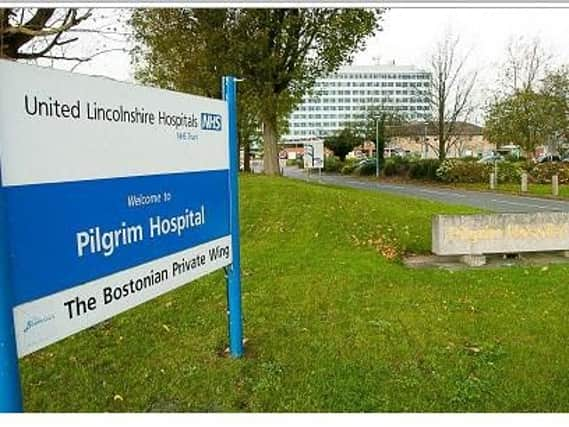Children were put 'at risk of harm' with 'unsafe' and 'unreliable' systems in place at Boston Pilgrim Hospital A&E say inspectors after unannounced visit


Issues spotted by CQC inspectors on November 30 include a child with potential sepsis who was not prioritised immediately.
A report by Amanda Stanford, deputy chief Inspector of Hospitals in the Central Region, says the ward was “under adverse pressure” when it carried out the inspection.
Advertisement
Hide AdAdvertisement
Hide AdComments from Ms Stanford’s report include: “Despite the department being under extreme pressure at the time of our inspection we saw no action taken to assess medical staffing levels were sufficient to meet the increasing capacity, demand or patientacuity issues. We heard how some doctors had not had a break for the entire 12-hour shift.
“ We saw patients such as a patient with a diabetic ketoacidosis (DKA) categorised as a category three when they should have been categorised as category one (immediate priority). We also saw a child with potential sepsis was also categorised as a category three when they should have been categorised as category one (immediate priority).”
Several key issues also included:
Patients waiting more than three hours to be assessed
Patients remaining in ambulances for 20-65 minutes, with no system in place to prioritise them
Critical observations being overdue by “significant time periods”
Staff not commencing treatment in a timely way
An unstructured approach to patient flow
An ineffective Rapid Assessment and Treatment process
Patients receiving care in corridors
Advertisement
Hide AdAdvertisement
Hide AdAn insufficient staffing level and skill mix to meet the needs of patients
Children placed at risk of harm because they were not cared for by nursing staff with the necessary competencies to provide safe and effective care.
Ineffective leadership within the department
A culture of blaming overcrowding and low staffing levels / recruitment and use of agency staff for poor compliance with safety measures and poor practice
The trust’s newly created Integrated Assessment Centre had an empty bed for three hours and insufficient clinical staff
Advertisement
Hide AdAdvertisement
Hide AdIn a statement, ULHT Director of Nursing Michelle Rhodes, has acknowledged that the report “will be upsetting for our patients, public and staff to read”.
She added: “We would like to apologise to any patients who have not received the high quality care we would expect.
“This report by the CQC makes very difficult reading for all of us and we fully accept their findings. This is a position none of us want to be in.
“We have been concerned for some time about the challenges faced at Pilgrim A&E, and had escalated it earlier this year.
Advertisement
Hide AdAdvertisement
Hide Ad“Providing safe, compassionate, patient-centred care is always our priority, but we know that A&Es across the country are struggling with large numbers of patients and shortages of staff, and these things acutely affect Pilgrim hospital.”
She said a number of the issues were already addressed and highlighted a further £800,000 investment in staffing and support.
She said individual cases mentioned in the report had been fully investigated.
“As a result of the work we have been doing over the last few weeks, we are confident that the service is more resilient, and with the continuing support from our partners we will build on this progress to help secure it further over the winter period,” she said.